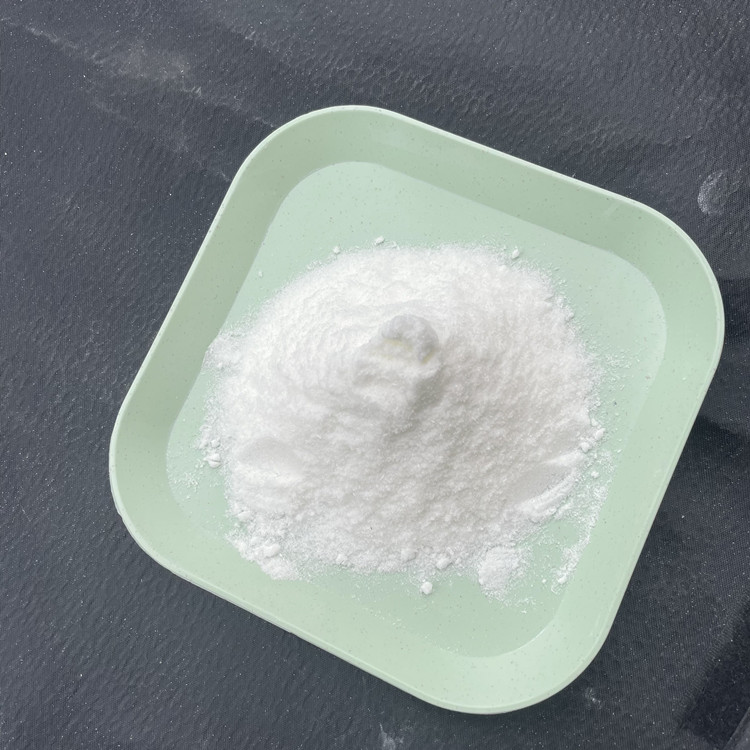Product Description
4-Methylcatechol CAS 452-86-8
-
452-86-8
-
-
Entrepreneur
-
White to brown crystalline powder
-
98% Min

Product Name: 4-Methylcatechol
CAS Number: 452-86-8
Chemical Formula: C7H8O2
Molecular Weight: 124.14
Appearance: White to brown crystalline powder
Purity: 98.0%min
Solubility: Soluble in water, miscible with acetone, ethanol, ether and toluene, moderately soluble in petroleum ether. Slightly soluble in carbon tetrachloride.
Density: 1.129 g/mL at 25 °C (lit.)
Boiling Point: 251 °C (lit.)
Flash Point: 140 °C
Melting Point: 67-69 °C (lit.)
Vapour: 0.016mmHg at 25°C
Refractive Index: 1.5425 (estimate)
SMILES: OC1=C(O)C=CC(C)=C1
InChI Key: InChIKey=ZBCATMYQYDCTIZ-UHFFFAOYSA-N
Description:
4-Methylcatechol, also known as Homocatechol, Homopyrocatechol or 4-Methyl-1,2-benzenediol, is a compound belonging to the methylcatechol family, is distinguished by a single methyl substituent situated at the 4-position of its molecular structure. This unique chemical composition grants it a range of intriguing properties and biological activities, prompting extensive investigation in the scientific community.
Originally isolated from Picea abies, commonly known as Norway spruce, 4-methylcatechol has been the subject of intense study due to its diverse roles in various biological contexts. One of its notable functions is its involvement as a hapten, playing a crucial role in immune responses. Moreover, this compound has garnered attention for its potential implications as both a carcinogenic agent and a potent antioxidant.
Remarkably, 4-methylcatechol is not limited to its role in human biology. It is a notable metabolite found in both human and plant systems, underscoring its widespread importance in the natural world. For instance, it has been discovered as a natural product in the extracts of Bistorta manshuriensis, Geosmithia langdonii, and the leaves of Camellia sinensis, commonly known as the tea plant.
Furthermore, 4-methylcatechol's significance extends to its involvement in specific metabolic pathways. Derived as a metabolite of p-toluate, this compound serves as both a substrate and a suicide inhibitor of Catechol 2,3-Dioxygenase, a key enzyme in certain biochemical processes.
In light of these intriguing characteristics, understanding the properties and functions of 4-methylcatechol holds great promise for advancing our knowledge of both chemical biology and potential biomedical applications. This review aims to delve into the various aspects of 4-methylcatechol, shedding light on its significance in human health, plant metabolism, and ecological interactions. Through exploring the latest research and discoveries, we hope to uncover the hidden potential of this fascinating compound and its possible implications for various fields of study.
Features:
1. Chemical Structure: 4-Methylcatechol is a catechol derivative with a methyl group attached to the 4-position of the benzene ring. Its unique structural arrangement gives it specific chemical properties.
2. Versatile Reactivity: Due to the presence of hydroxyl groups on the aromatic ring, 4-Methylcatechol can undergo various chemical reactions, making it a valuable intermediate in organic synthesis.
3. Metabolite of p-Toluate: 4-Methylcatechol acts as a metabolite of p-toluate, contributing to the degradation of certain aromatic compounds in biological systems.
4. Enzyme Interaction: This compound serves as both a substrate and a suicide inhibitor of Catechol 2,3-Dioxygenase, an enzyme involved in the breakdown of aromatic compounds. Its ability to interact with enzymes makes it relevant in enzymology studies.
5. Pharmaceutical Research: 4-Methylcatechol is of interest in pharmaceutical research due to its role as a precursor in the synthesis of diverse compounds. Its versatile reactivity offers potential applications in drug development.
6. Biological Relevance: As a natural metabolite, 4-Methylcatechol has implications in understanding biological pathways and environmental processes involving aromatic compound degradation.
7. Industrial Applications: The compound finds use in various industrial processes, particularly in the production of chemicals and pharmaceuticals.
8. Stability and Handling: 4-Methylcatechol is a stable compound under appropriate storage conditions, and its handling requires standard safety precautions.
In summary, 4-Methylcatechol exhibits unique chemical reactivity, biological significance, and applications in pharmaceutical research and industrial processes, making it a valuable compound in scientific and practical contexts.
Applications:
1. Sterilization and Mildew Prevention:
4-Methylcatechol is utilized for the sterilization and mildew prevention of photosensitive materials, making it valuable in the preservation and protection of such materials.
2. Apple-type Spices:
In the food industry, 4-Methylcatechol finds application in the manufacture of apple-type spices, imparting unique flavors to various food products.
3. Intermediate in Pharmaceutical Synthesis:
Due to its versatile reactivity, 4-Methylcatechol serves as an important intermediate in the synthesis of antibacterial agents and antioxidants. These compounds are utilized in pharmaceutical research and drug development to combat microbial infections and provide antioxidant properties.
4. High-Efficiency Polymerization Inhibitor:
4-Methylcatechol is employed as a high-efficiency polymerization inhibitor in various industrial processes. It helps prevent undesirable polymerization reactions, ensuring the stability and quality of the final products.
5. Immunology and Biomedical Research:
Due to its role as a hapten, 4-methylcatechol finds applications in immunological studies, aiding in the investigation of immune responses and antigen-antibody interactions.
6. Cancer Research:
While 4-methylcatechol has been identified as a carcinogenic agent, its involvement in cancer development provides opportunities for research aiming to better understand the molecular mechanisms of carcinogenesis and identify potential targets for cancer treatment.
7. Environmental and Ecological Studies:
As a natural product found in diverse plant species, 4-methylcatechol contributes to ecological interactions and may have implications in environmental monitoring and plant-microbe interactions.
8. Biotechnological Applications:
Understanding the metabolic involvement of 4-methylcatechol, particularly as a substrate and inhibitor of Catechol 2,3-Dioxygenase, opens avenues for biotechnological applications, including enzyme inhibition studies and the development of novel biocatalysts.
Storage: Keep in dark place, Inert atmosphere, Room temperature
Package: 25Kg/drum or as per your particular request